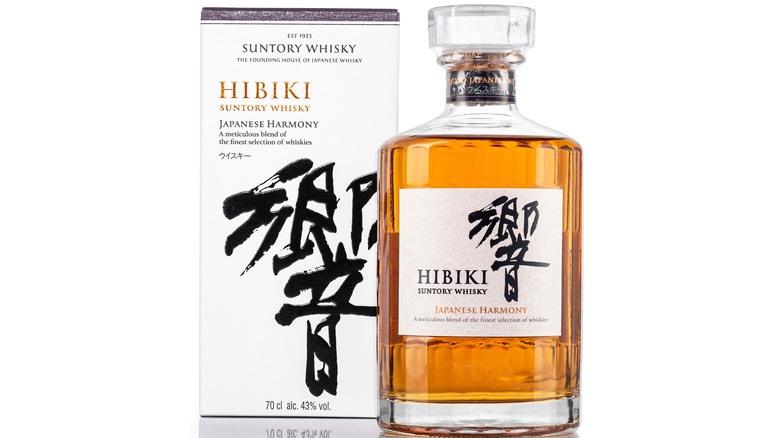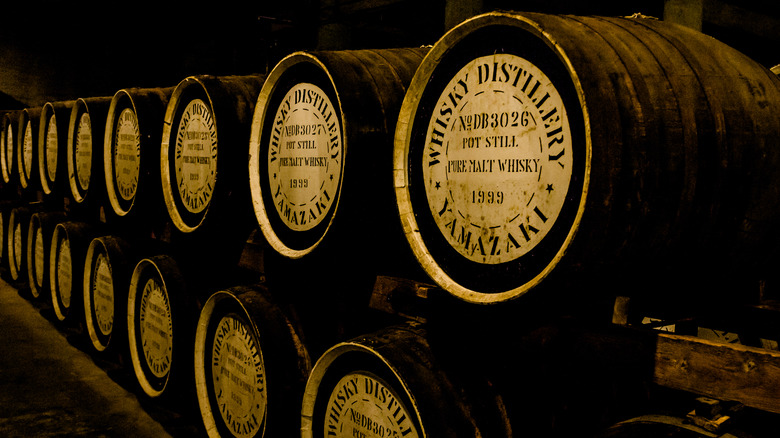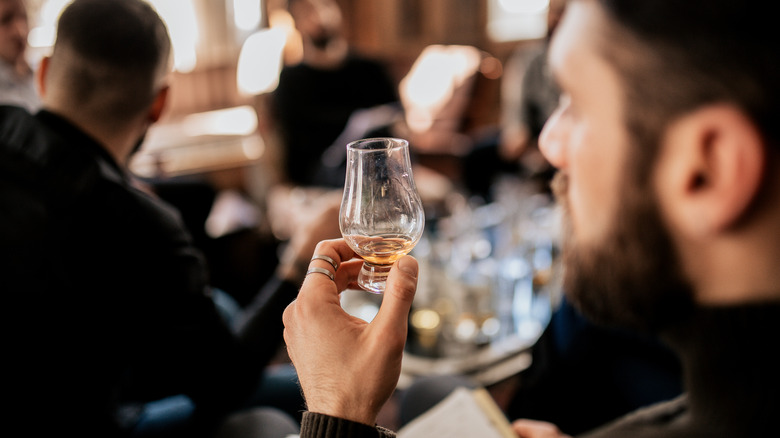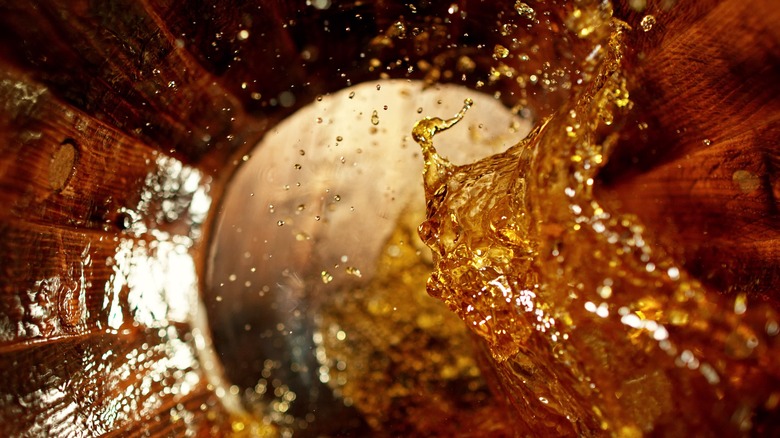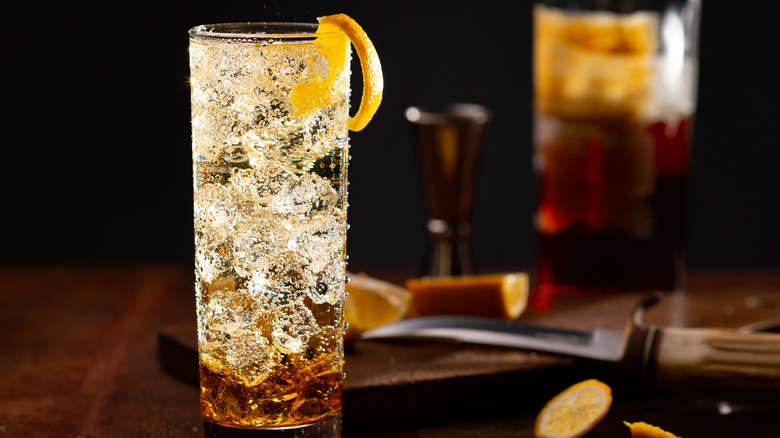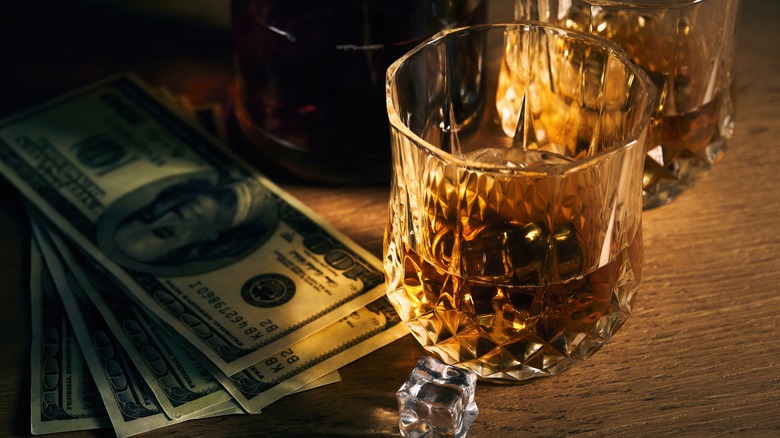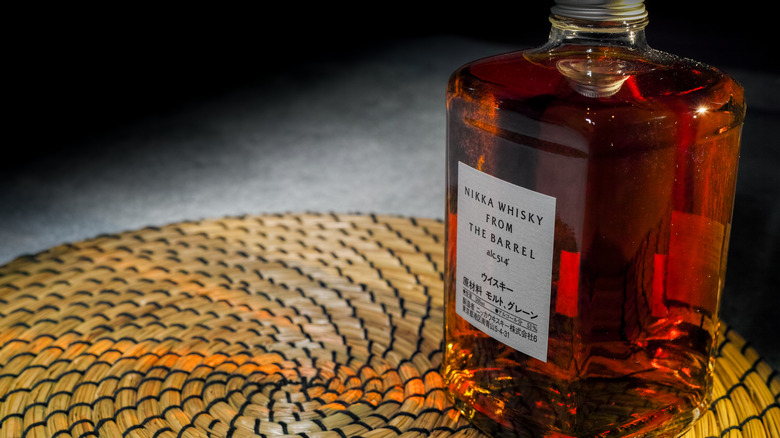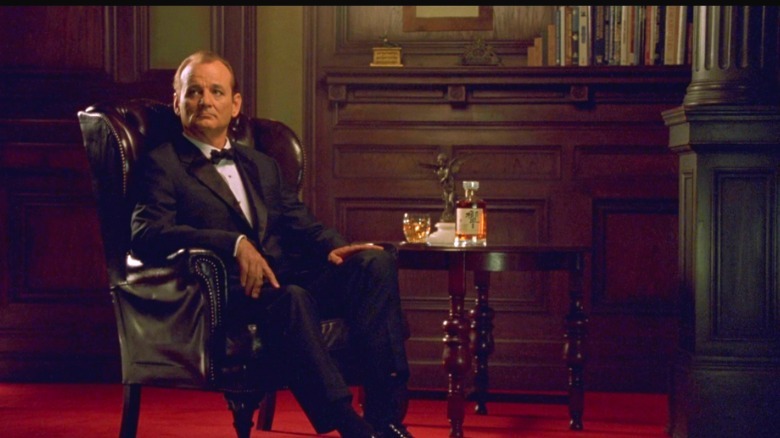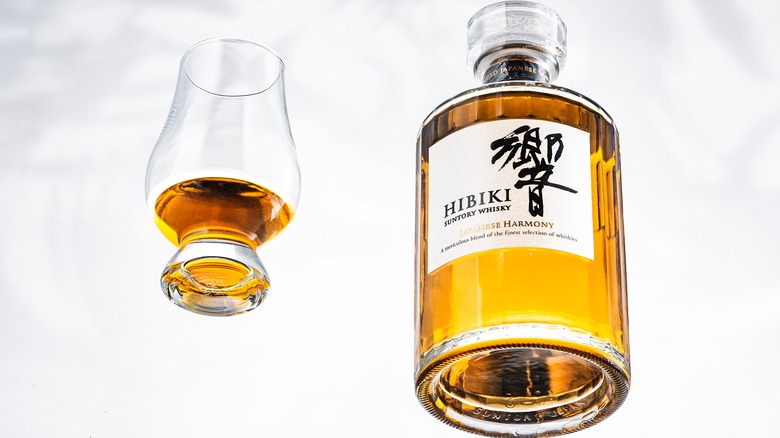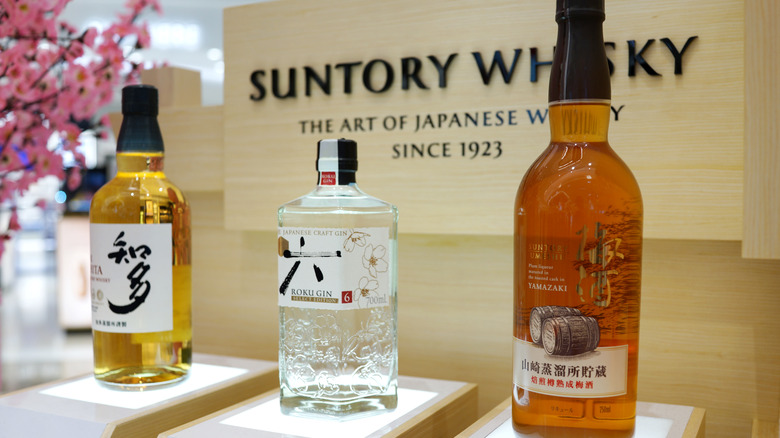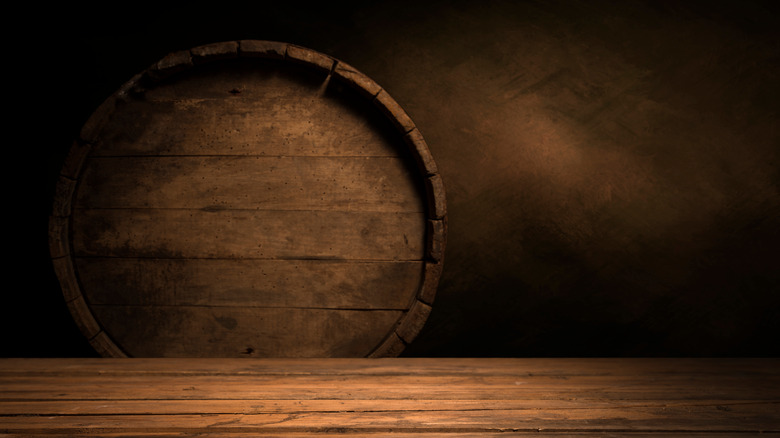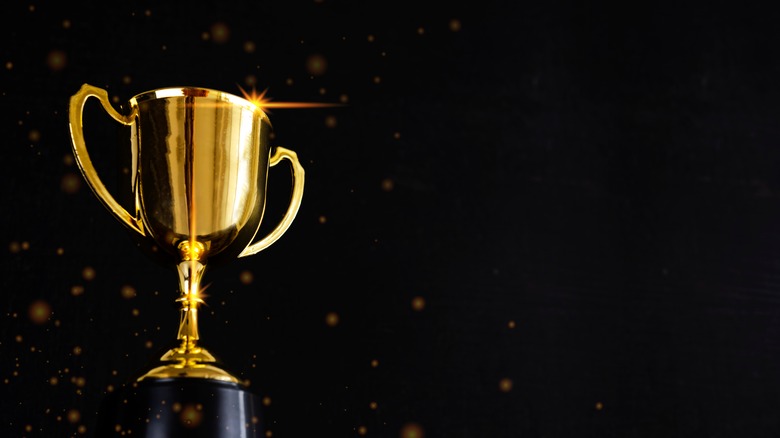Hibiki Japanese Harmony Whisky: The Ultimate Bottle Guide
If you're a whiskey drinker but haven't tried any Japanese varietals yet, there's no better time than the present. Japanese whisky has taken the world by storm in the last decade — in fact, Forbes reports as recently as 2019, the US was importing 50 times more Japanese whisky than it did in 2011. Japanese whiskies are notorious for being difficult to track down and tend to cost a pretty penny when compared to their Irish, Scotch, and American counterparts, but that's not to say they're unavailable. In fact, one of the most popular lines happens to hail from the very first whisky distillery ever established in Japan — House of Suntory's Hibiki collection.
The Japanese word hibiki loosely translates to "echo" or "sound" in English. Suntory interprets it as "harmony," and in keeping with the theme, one of their most popular and accessible bottles is Japanese Harmony — a whisky so nice they named it twice. Japanese Harmony has no age statement (NAS). In fact, it's a blend made from at least ten malt and grain whiskies from three different Suntory distilleries, each of which is aged differently (per The Whisky Wash). Amber in color and containing 43% alcohol by volume, the bottle is said to taste both woody and sweet, with a hint of rare Japanese oak in its finish. Here's everything you need to know about House of Suntory's Hibiki Japanese Harmony.
History of Hibiki Japanese Harmony
House of Suntory was the first Japanese whisky distillery, founded by Shinjiro Torii in 1899 under the business name Torii Shoten. Having spent his teens and young adult years learning the fine craft of liquor blending and developing a taste for Western liquor, Shinjiro aspired to create a blended whisky in the style of Scotch. He soon discovered, however, that European alcohol did not enchant the Japanese population the way it had him, so he instead set out to brew the first-ever Japanese whisky. In 1923, he opened the very first malt whisky distillery in Japan: Yamazaki.
Shinjiro and his descendants have continued to expand the business for 120+ years, and in 1989, the Hibiki line was released to commemorate the business' (by that time known as Suntory) 90th anniversary. By this point, Suntory was operating two additional distilleries besides Yamazaki — the Hakushu and Chita distilleries. According to Gear Patrol, each expression in the Hibiki collection is actually a blend of multiple whiskies produced at each of Suntory's three distilleries and is intended to represent the full bouquet of tasting notes for which the individual distilleries are renowned.
Many varieties have graced liquor store shelves over the years, but Japanese Harmony was not introduced until 2015 after the extremely popular Hibiki 12 Year was discontinued, and stocks grew low on the famous Hibiki 17 Year. Because Japanese Harmony has no age statement, it's easier to produce than Suntory's aged liquors, and it quickly became a fan favorite after its release.
What does Japanese Harmony taste like?
The five anchor whiskies that make up Japanese Harmony are drawn from different casks, each of which has its distinct properties detectable in the finished product. Per Master of Malt, Japanese Harmony is a rich, elegant blend that combines malt whiskies from Suntory's Yamazaki and Hakushu distilleries with grain whisky from the Chita distillery. Malt whiskies (made exclusively from malted barley mash) generally have a sweet, candylike taste. Producers of grain whiskey, however, can use any grains they like (or combinations of different grains) to distill their liquors, leading to a greater variety of flavors. In the case of Chita (Suntory's grain distillery), corn is the primary grain used. Per Lux Row Distillers, grain whiskies made with corn are also sweet but with more of a buttery, creamy taste than malt varieties.
According to Suntory, the blend has woodsy, floral notes on the nose and is sweet with a citric bite on the tongue, all qualities commonly found in malt whiskies. Liquor.com describes it as having "hints of light raw coconut, apricot, saline, and chrysanthemum" with a touch of an herbaceous note on the nose, likely thanks to the grain whiskies produced by Chita. Its finish is reported to mimic flavors commonly found in red wines, such as baking spices, chocolate, and dark fruit.
How is Japanese Harmony made?
Suntory's Hibiki line is notable because it's the only collection that contains pieces from every distillery and type of cask that Suntory uses. Suntory's three distilleries are located in different parts of Japan with varying climates, subtly affecting the aging processes and, ultimately, the end products. When choosing the location for his very first distillery (Yamazaki), Shinjiro Torii sought out an area of humid, subtropical Kyoto with easy access to three rivers containing some of the best water in Japan. According to Whiskey Mag, Japan's water is far softer and purer than Scotland's. The softness of the water and the humid climate of the region make for ideal aging conditions for Japanese Harmony.
Suntory is tight-lipped when it comes to discussing the actual production of its whiskies, but Japanese Harmony is confirmed to be a blend of single malt whiskies from Yamazaki and Hakushu and grain whisky from Chita. Historically, the standards of distilling Japanese whisky have been loose. Incredibly, no formal definitions for the production of Japanese whisky existed until 2021, when the Japan Spirits & Liqueur Makers' Association created regulations around it. Nowadays, Japanese whisky producers must follow these protocols to brand their products as true Japanese whiskies. Wine Mag reported that a representative from Beam Suntory confirmed that Japanese Harmony (and the rest of Suntory's whiskies) were already up to code and that nothing would be changed.
How to drink Hibiki Japanese Harmony
Although he didn't invent the drink, according to Chilled, Shinjiro Torii helped popularize the notion of the highball cocktail by featuring whisky highballs at Torys, a chain of bars he opened across Japan. A highball can be any drink that combines a portion of liquor with a mixer (usually carbonated), and Suntory has easy-to-follow instructions for preparing the perfect Japanese Harmony whisky highball. Add ice to your cup to chill the glass, pour in one part whisky (which should also be chilled), and stir the whisky with the ice. Pour 3-4 parts chilled soda water per one part liquor into the same cup, then use a bar spoon to give the mixture a single stir from bottom to top to combine everything together. Add a twist of the citrus, and voila! A timeless beverage in a flash.
The highball is certainly not the only way to enjoy Japanese Harmony. There are many other drinks that can be mixed with whisky ranging from sweet fruit juice to crisp sodas to creamy beverages like milk. If you want to really taste the undiluted sweet, earthy, floral flavors of Japanese Harmony, you can opt to drink it neat. Suppose you enjoy the flavor of whisky but aren't one to drink your liquor straight up. In that case, Suntory recommends sipping your Hibiki Japanese Harmony on the rocks, mixed with water, or heated for a hot whisky drink — an excellent way to warm your bones on a chilly winter day.
Why is Japanese Harmony so expensive?
Japanese Harmony has a fairly accessible price point for a Japanese whisky and is the most inexpensive bottle in the Hibiki line, starting at around $75 USD per 750 ml bottle (per The Whiskey Exchange). However, Japanese whisky is generally more expensive than Scotch, Irish, and American varieties. There are a number of reasons for this, but the most notable is a greater demand for Japanese whisky than what Japan's distillers can feasibly produce. As Money Inc. reports, when the rice-based liquor Schoch was introduced to Japan in the 1980s, many of Japan's distilleries shut their doors for good.
However, that didn't signal the end of the road for Japanese whisky. As mentioned earlier, the liquor has actually seen a steady climb in popularity in the West over the last decade, to the point that it's led to a shortage of Japanese whisky in the last few years. Part of the reason Suntory can slap a fairly low price tag on its Hibiki Japanese Harmony bottles is that this particular variety does not have an age statement. Older whiskies have aged longer in their casks and are subsequently more valuable than their younger counterparts. Because Japanese Harmony is a blend of different aged whiskies from Suntory's three distilleries, the producers are not able to declare how long it was aged. This makes it less expensive than the other whiskies in the Hibiki collection. For the price, it's a steal, and Japanese Harmony is certainly worth its cost!
Hibiki Japanese Harmony versus Nikka from the Barrel
It can be difficult to find fine Japanese whiskies at a similar price point to Hibiki Japanese Harmony, but one comparable bottle is Nikka Whisky's Nikka From The Barrel. Nikka Whisky's Founder, Masataka Taketsuru, is commonly referred to as "the father of Japanese whisky," and his story bears many similarities to that of Shinjiro Torii. In fact, Shinjiro and Masataka worked together to build Suntory's Yamazaki distillery and oversaw the production of its first whiskies. When his ten-year contract with Suntory was up, however, Masataka went his own way and founded Nikka Whisky in 1934.
Like Suntory, Nikka has produced many bottles over the years, and Nikka from the Barrel is a complex blend just like Japanese Harmony. Both brands' retail price begins at around $80 USD, but Nikka has considerably higher alcohol by volume at 51.4% to Japanese Harmony's 43%. According to the manufacturer, Nikka contains flavors similar to those delivered by the barrel itself: sweet, woodsy, and smoky. As one Redditor states, Japanese Harmony is "subtle and transparent, allowing flavors and aspects to be seen," while Nikka from the Barrel is "more about density than subtlety [...] On a spectrum, Hibiki is closer to an Irish or Scotch blend, and Nikka is closer to a Bourbon."
Hibiki 17 was featured in the movie Lost in Translation
Japanese Harmony was developed in part to recoup the loss of two of the most well-loved expressions in the Hibiki line: Hibiki 12 and Hibiki 17. Well before the popularization of Japanese whiskies in the United States, Hibiki 17 Year was featured in Lost in Translation, a 2003 film starring Bill Murray as washed-up actor Bob Harris and Scarlett Johansson as Charlotte, the neglected wife of a successful photographer. The two lost souls find each other in Tokyo and become friends after Charlotte follows her husband to Tokyo for work and Harris lands in Japan's capital to shoot a commercial for (you guessed it) Suntory — specifically, Suntory's Hibiki 17 Year expression.
As ScotchWhisky.com explains, whisky plays an important role in the film. It's more than just the impetus for bringing Harris to Tokyo — it's also the element that leads to many of the melancholic film's best comical moments. Multiple scenes in Lost in Translation are punctuated with booze, given that Harris and Charlotte meet at a hotel bar, and many of their scenes involve Charlotte sipping a vodka tonic and Harris promoting the Hibiki 17 Year. Given that the film was released over seven years before Japanese whiskies began their meteoric rise in the US, it's unlikely that the movie contributed to the immense popularity these bottles enjoy in the West today. But whisky and film aficionados alike will delight in the funny yet lugubrious picture.
The bottle was influenced by Japan's traditional calendar
Hibiki means "harmony, echo, or resonance" in Japanese, so it should come as no surprise that Japanese Harmony (in fact, every bottle in the Hibiki line) is specially designed to reflect the theme. Just as Suntory's whiskies were developed to cater and reflect the refined Japanese palate, the bottles are intended to portray a true and uniquely Japanese style.
The Japanese Harmony bottle is circular and composed of 24 sides, which represent both the traditional Japanese calendar and the 24 hours in each day. In the olden days, Japanese farmers recognized the four major seasons — winter, spring, summer, and fall — but in order to more closely manage their crops, the seasons were further broken down into 24 sekki, or "small seasons" (per Small Seasons). The number 24 is intended to persuade consumers of the liquor to envision, consider, and appreciate the time that went into crafting the bottle, as well as the nature of time itself. The intricate calligraphy used on Japanese Harmony bottles further celebrates the unique nature of Japanese whisky.
Suntory is a family business
Although Suntory is now a worldwide conglomerate, Forbes reports it's controlled by 18 of Shinjiro Torii's direct and indirect descendants. Shinjiro Torii, Suntory's founder, had three sons. His second son, Keizo Saji (who was adopted), became Suntory's Master Blender in the 1970s and was responsible for building the company's second and third distilleries, Hakushu and Chita, and for expanding the company's single malt expressions. Since Keizo's death in 1999, the business has been run by Keizo's own son, Nobutada Saji.
Nobutada has taken the Suntory business to new heights since taking over, acquiring major liquor brands and affiliates in the last two decades — perhaps most notably a $16 billion deal with the big-time American whiskey company, Beam. However, it was Shinjiro Torii's grandson, Shingo Torii, who we have to thank for the Hibiki line. According to The Spirits Educator, the master blender dreamed of creating a line of spirits that would honor his grandfather's tradition of crafting fine blended liquors while taking the concept of Japanese whisky to a whole new level.
Japanese Harmony's woodsy taste comes from Mizunara
Hibiki Japanese Harmony consists of a blend of whiskies from Suntory's Yamazaki, Hakushu, and Chita distilleries. One of the most unique woods used for the casks is Japanese oak or Mizunara, an incredibly rare type of wood coveted by whiskey distillers around the world. As Chris Morris, CEO of Woodford Reserve, explained to Gear Patrol, "White oak, when properly sourced, seasoned and heated, provides a range of natural color, aroma, flavor and mouthfeel compounds that help define our whiskey."
Mizunara is native to Japan and is incredibly difficult to find, so the flavors it lends to whiskies aged in Japanese oak barrels are truly unique. Mizunara has the lowest levels of tannins of any oak, and the tree itself has a complex cellular structure, which allows for easier cutting and shaping into nonporous casks. Mizunara trees must be at least 200 years old before harvest (per Wine Enthusiast), and distilleries must bid against one another to purchase the wood at a public auction, where a single barrel can go for $6,000 USD or more. Given the high demand and low supply of Mizunara, it's not surprising that Japanese whisky aged in casks made of this scarce wood is a rare treat for all but the most fabulously wealthy.
Japanese Harmony is an award-winning whisky
Winning an award in the art of whisky making is no small feat, but Suntory's Hibiki line is up to the challenge. Hibiki produces some of the most awarded whisky in all of Japan, but their success isn't limited to their home country. According to Dekanta, Hibiki's 21 Year expression is not only the most decorated whisky in Japan — it's one of the most-awarded whiskies in the world, even when competing with more popular Irish, Scotch, and American variations.
Japanese Harmony has won several awards since its 2016 release — impressive for a bottle with no age statement. In 2015, it took home double gold from the San Francisco World Spirits Competition, and the following year; it nabbed the International Spirits Competition gold prize. Hibiki Japanese Harmony's Master's Select, a limited edition bottle that sells for anywhere from three to five times the price of the regular version, was awarded yet another gold medal at the World Whiskies Awards in 2016. NAS whiskies often have a tough time beating out aged varieties come competition time, but the success of Hibiki Japanese Harmony proves that with enough care and craftsmanship, whisky blends can be just as impressive, if not more so, than their counterparts.
